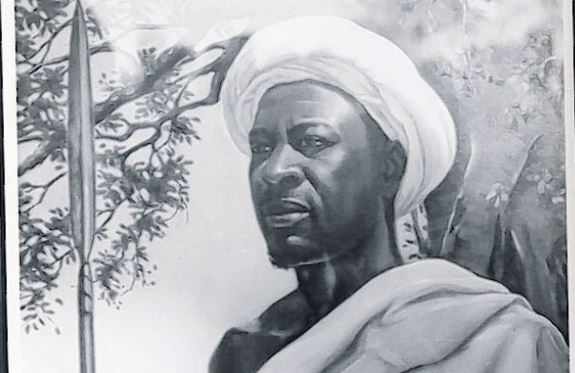An emotional visit to Mkwawa’s Lugalo historical battle valley

Portrait of Hehe’s Chief Mkwavinyika Munyigumba Mwanuyinga - Mkwawa - who fought and defeated a German convoy at Lugalo in Iringa on August 17, 1891. PHOTO | FILE
What you need to know:
- Some 20 or so kilo meters from Iringa, a few kilometres before reaching Ilula township and the subsequent panoramic and breathtaking Kitonga escarpment, I stopped for a short call.
After a two day rest at ‘Lilinga’, that is the Hehe name for Iringa - or rather the ‘Fort’, I was, earlier this week, ready to again casually drive my contraption along A7 Tanzam highway towards Morogoro. This was part of my trip back to Arusha.
Some 20 or so kilo meters from Iringa, a few kilometres before reaching Ilula township and the subsequent panoramic and breathtaking Kitonga escarpment, I stopped for a short call.
It was while at it that I realised I was at the very heart of the historical Lugalo. I am sure most young men and women - the dot.com generation - in Bongoland know Lugalo as that famous military barracks straddling the Bagamoyo Road, north of Dar es Salaam.
What they do not know is that the name Lugalo is inspired by the place where, on August 17, 1891, a dawn successful attack by Hehe warriors against the mighty German colonial military force was conducted.
The German well armed force, of ten officers, 250 askaris recruited from several neighbouring kingdoms including Sudan and 100 porters, led by one Commander Emil von Zelewski, were on their way to silence the ‘rebellious’ Hehe Chief Mkwavinyika Munyigumba Mwanuyinga - Mkwawa- and his warriors, who was resisting colonial rule.
As they passed through an area with thick bush at Lugalo, with Zelewski at the head riding on a donkey and one Leutenant Tettenborn bringing the rear, a flock of birds flew by. Wanting to bag some meat, it is alleged some officers shot at the birds.
Unknowingly, this seems to have triggered the Hehe ambush whose warriors, led by Chief Mkwawa’s brother Ngosongosi, were waiting at the area. It is said that the planned signal for the ambush was supposed to come from their leader who would imitate a cry of a bird - but now real birds gave that signal.
The Hehe descended quickly on the German led convoy and its soldiers, shouting ‘Hee! Twihumite. Hee! Twihumite. He! He! He!’ (Hey! Hey! We have come out. Hey! Hey!) and mowed then down with long and short spears and axes. The German force did not even have enough time to assemble their Maxim machine guns and rifles and repel the ambush.
It was at this moment that von Zelewski himself was speared on the back and died like most members of the convoy. He died at the hands of a 16 year old boy who was subsequently awarded three cows by Chief Mkwawa himself.
Leutenant Tottenhorn who was commanding the rear guard, retired with a small straggling force, to a small hill, formed a ‘defensive’ position and waited for survivors. They never came. He later retreated to Mpwapwa leaving the dead unburied.
Bodies left on the battlefield included 10 officers including Zelewski, 250 askaris and 100 porters. 60 Hehe warriors, including their Commander Ngosingosi also died at the scene while about 250 others are estimated to have died later of their battle wounds.
All the German artillery, including 300 modern firearms were lost, which the Hehe later set up at Kalenga, their ‘Ikulu’, a few kilometres south of Iringa.
This defeat apparently threw the Germans into the defensive throughout their East African territories. It was not until 1894 when their force, led by one Colonel Freiherr Friedrich von Schelle overran Kalenga as Mkwawa fled. Mkwawa would conduct guerrilla warfare until 19 July 1898 when he was surrounded but shot himself to avoid capture.
At the Lugalo area there are presently two monuments, one on the south of the highway commemorating the German fallen soldiers and another to the north, for the fallen Hehe warriors.
As I stood there trying to grasp the great history behind these rolling ridges and valleys surrounded by picturesque rocky hills, I could not fail but relive and visualise the gallant Hehe warriors as they descended onto the German convoy, about 130 years ago, shouting ‘He! Twihumite. He! He! He!’ Maybe this is why, among other reasons, the natives of this area are called Hehes.
The author is a veteran journalist and communication expert based in Arusha.





